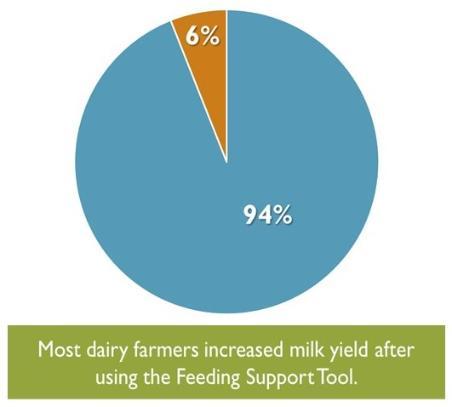Project in Nepal
Feeding Support Tool Development for Enhancing Dairy Animal Productivity for Improved Livelihood of Smallholder Dairy Farmers in Nepal
Timeline: October 2016 - March 2018
Funding: USAID
Principal investigator (PI) and lead institution
Bhola Shankar Shrestha, Heifer International Nepal
Co-PI and collaborator institutions
- Keshav P. Sah, Heifer International Nepal
- Megh Raj Tiwari, Nepal Agriculture Research Council
- Babu Kaji Panta, National Dairy Development Board
Short Video: App of Feeding Support Tool in Nepal
- Available on YouTube: https://youtu.be/qo1r7CPMDGQ
Video dubbed in English: Building Resilience in Smallholder Dairy Farms of Nepal
- Available on YouTube: https://youtu.be/Yz04u98bJ5E
Results
Paudel, T.P., Pokharel, B.R., and Shrestha, B.S. 2019. Assessment of the dairy animal feeding system of western Nepal: a synthesis of focus group discussions. SAARC J. Agric., 17(2): 253-266.
- App: available from Google Play, under name "Heifer-LFST" (Livestock Feeding Support Tool)
- Blog: Results-sharing workshop paves way for scaling dairy innovations in Nepal
-
Poster: Mobile App-Based Feeding Support Tool to Optimize Dairy Animal Productivity
Project Plan
 The productivity of dairy animals (cattle and buffalo) in Nepal is generally low due to the cumulative effects of poor genetics, poor and inappropriate feed management and a large number of diseases. The most critical factor associated with low productivity is improper (inadequate and unbalanced) feeding. The overall goal of the project was to increase the household income and create improved livelihoods of smallholder dairy farmers through improvement of dairy animal productivity particularly through feeding management improvement.
The productivity of dairy animals (cattle and buffalo) in Nepal is generally low due to the cumulative effects of poor genetics, poor and inappropriate feed management and a large number of diseases. The most critical factor associated with low productivity is improper (inadequate and unbalanced) feeding. The overall goal of the project was to increase the household income and create improved livelihoods of smallholder dairy farmers through improvement of dairy animal productivity particularly through feeding management improvement.
The specific objectives of this project were: (1) To analyze existing dairy animal feeding practices and identify major areas for improvement; (2) Develop and utilize a Feeding Support Tool (FST)/Ration Balancing Software (RBS) to enhance dairy animal productivity; and (3) Strengthen the capacity of the frontline livestock extension workers and smallholder dairy animal farmers (especially women farmers) on dairy animal feeding management.
Photo credit: B. Shrestha
Feed the Future Innovation Lab for Livestock Systems is part of Feed the Future






